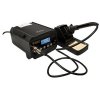Rob Pulham
Western Thunderer
Sorry I forgot to add a plus one for the Building O Gauge flux and a good tip for using it is get yourself one of the cheap syringes that are sold on eBay for refilling printer cartridges (search syringe ink refill for many options £2/£3 for 4) grind/file the tip back and you can dispense flux just where you want it in small quantities with out the risk of knocking over the bottle etc.
for the Building O Gauge flux and a good tip for using it is get yourself one of the cheap syringes that are sold on eBay for refilling printer cartridges (search syringe ink refill for many options £2/£3 for 4) grind/file the tip back and you can dispense flux just where you want it in small quantities with out the risk of knocking over the bottle etc.
Using this method I have just started on my second bottle the first having lasted going on for 3 years.
 for the Building O Gauge flux and a good tip for using it is get yourself one of the cheap syringes that are sold on eBay for refilling printer cartridges (search syringe ink refill for many options £2/£3 for 4) grind/file the tip back and you can dispense flux just where you want it in small quantities with out the risk of knocking over the bottle etc.
for the Building O Gauge flux and a good tip for using it is get yourself one of the cheap syringes that are sold on eBay for refilling printer cartridges (search syringe ink refill for many options £2/£3 for 4) grind/file the tip back and you can dispense flux just where you want it in small quantities with out the risk of knocking over the bottle etc.Using this method I have just started on my second bottle the first having lasted going on for 3 years.










